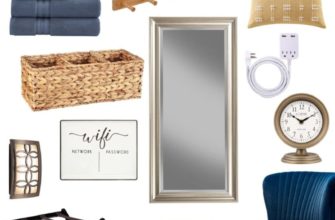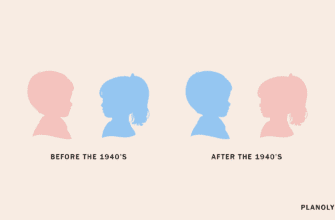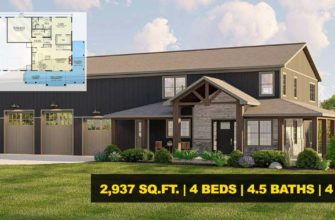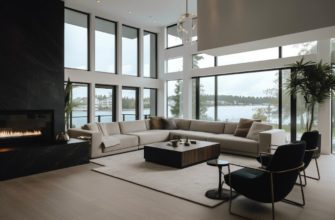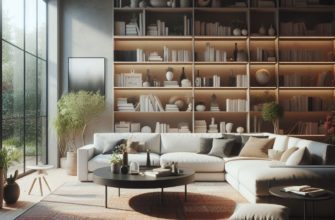Discover the art of transforming your abode into a haven that exudes style and sophistication. This comprehensive guide will provide you with invaluable tips and tricks for elevating your apartment decor to new heights. Delve into the world of interior design as we unveil the key principles that will help you curate a chic and inviting home.
Embrace the Power of Simplicity
Revolutionize Your Health & Lifestyle!
Dive into the world of Ketogenic Diet. Learn how to lose weight effectively while enjoying your meals. It's not just a diet; it's a lifestyle change.
Learn MoreWhen it comes to apartment design, less is truly more. Embrace the philosophy of minimalism and let simplicity take center stage. By utilizing clean lines, neutral color palettes, and uncluttered spaces, you can create an atmosphere of modern elegance that is both calming and visually appealing. Let each carefully chosen piece of furniture and décor make a statement, allowing for a sense of harmony and balance to permeate throughout your living space.
Amp Up the Ambiance with Texture and Patterns
Adding texture and patterns to your apartment is a surefire way to inject visual interest and warmth into your decor scheme. Experiment with different materials such as plush rugs, textured wallpapers, and woven accents to create a tactile experience that is both inviting and luxurious. Incorporating patterns through statement pieces, such as patterned throw pillows or bold curtains, will infuse your living space with personality and charm, making it truly unique and captivating.
Create a Cohesive Color Palette
Developing a harmonious and unified color palette for your living space is key to achieving a stylish and visually appealing home. By thoughtfully selecting and coordinating colors, you can create a space that feels cohesive, balanced, and reflects your personal style.
1. Establish a color scheme: Begin by determining the overall color scheme for your apartment. Consider whether you prefer a monochromatic, complementary, analogous, or triadic color scheme. This decision will set the foundation for your palette.
2. Choose a primary color: Select a primary color that will act as the main focus in your space. This color should be used in larger proportions and will help create a sense of unity throughout the different areas of your home.
3. Incorporate secondary and accent colors: Once you’ve established your primary color, choose two or three secondary colors to support and complement it. These colors should be used in smaller amounts and can be incorporated through furniture, accessories, and artwork. Additionally, consider incorporating accent colors in smaller details like throw pillows, rugs, and decorative items to add interest and depth to your space.
4. Consider color psychology: Keep in mind that different colors evoke different emotions and moods. For example, cool colors like blue and green can create a calming and serene atmosphere, while warm colors like red and orange can bring energy and vibrancy to a room. Understanding color psychology can help you create the desired ambiance in each area of your apartment.
5. Test and adjust: Before committing to a specific color palette, it’s essential to test the colors in your space. Paint sample swatches on your walls or use fabric samples to see how the colors interact with the lighting and other elements in the room. Make adjustments as needed to ensure the colors work well together and achieve the desired look and feel.
By following these principles and carefully curating your color palette, you can transform your apartment into a stylish and cohesive home that reflects your personal taste and creates a welcoming environment for both you and your guests.
Choose the Dominating Hue
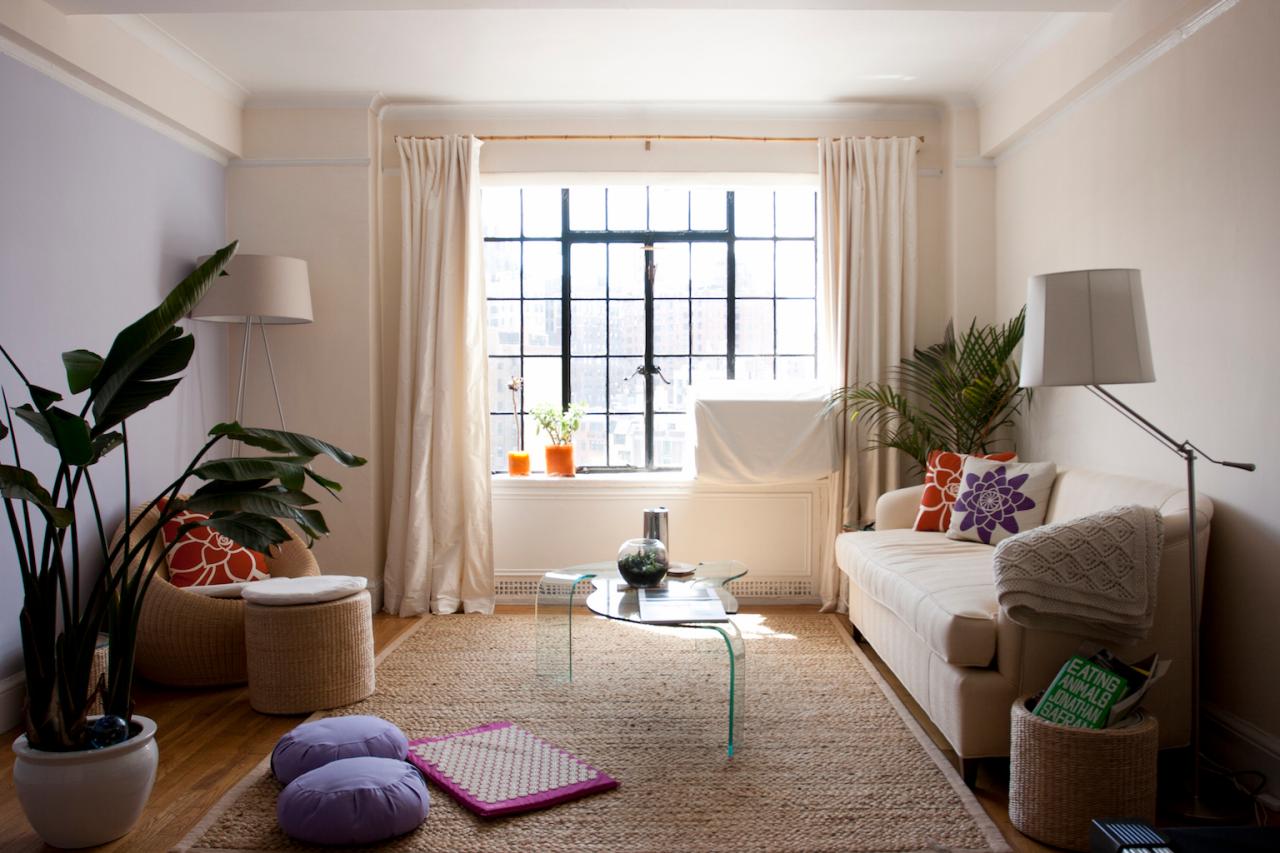
Your apartment’s color scheme can greatly influence the overall style and ambiance of your living space. When it comes to decorating, selecting a dominant color is crucial in creating a cohesive and visually appealing design.
The dominant color sets the tone for the entire apartment, establishing a focal point and guiding the selection of complementary hues. It is the shade that will be the most prominent and repeated throughout the space, creating a sense of harmony and balance.
When choosing a dominant color, consider the mood you want to evoke in your home. Warm colors like red, orange, and yellow can create a cozy and inviting atmosphere, while cool colors like blue, green, and purple can bring a sense of calmness and tranquility. Neutrals, such as white, gray, and beige, can serve as a versatile backdrop, allowing other elements to stand out.
It’s important to be mindful of the size and lighting of your apartment when selecting a dominant color. Lighter shades can make a small space appear larger and brighter, while darker hues can add depth and a sense of coziness to a larger room.
Lastly, don’t be afraid to experiment with different shades and tones of your chosen color. Incorporate various textures and patterns to add visual interest and depth to your space. Remember, the dominant color will be the anchor of your apartment’s design, so choose wisely and let it guide you in creating a stylish and harmonious home.
Complement with Subtle Tones
In the realm of interior design, creating a stylish and visually appealing space is often achieved through a careful balance of color and texture. While bold and vibrant tones can make a statement, there is an underrated elegance in incorporating subtle tones into your apartment decor.
By choosing a palette of gentle hues and understated shades, you can create a sophisticated ambiance that exudes tranquility and balance. Soft pastels, muted neutrals, and delicate earth tones can work harmoniously together, allowing each element in your space to shine without overwhelming the eye.
Not only do subtle tones create a serene atmosphere, but they also offer versatility and longevity. These understated colors serve as a timeless backdrop, providing the perfect canvas for showcasing your personal style and evolving design preferences over time. Whether you prefer a minimalist aesthetic or a more eclectic approach, subtle tones can seamlessly adapt to various decor styles.
To add depth and visual interest, consider incorporating texture alongside subtle tones. Ranging from woven fabrics to natural materials such as wood and rattan, the addition of different textures can elevate the overall aesthetic of your apartment. This interplay between subtle colors and tactile surfaces adds dimension to your space, making it more inviting and visually appealing.
Remember, subtlety does not equate to dullness. By strategically incorporating pops of color or metallic accents, you can create eye-catching focal points within your decor. These unexpected touches serve as points of contrast, enhancing the overall visual appeal of the space and preventing it from feeling monotonous.
In conclusion, when it comes to apartment decorating, embracing subtle tones is an effective way to create a stylish home. By carefully selecting a palette of gentle hues, incorporating texture, and adding touches of contrasting colors, you can achieve a balanced and elegant space that reflects your personal style and fosters a sense of tranquility.
Add Depth with Accent Colors
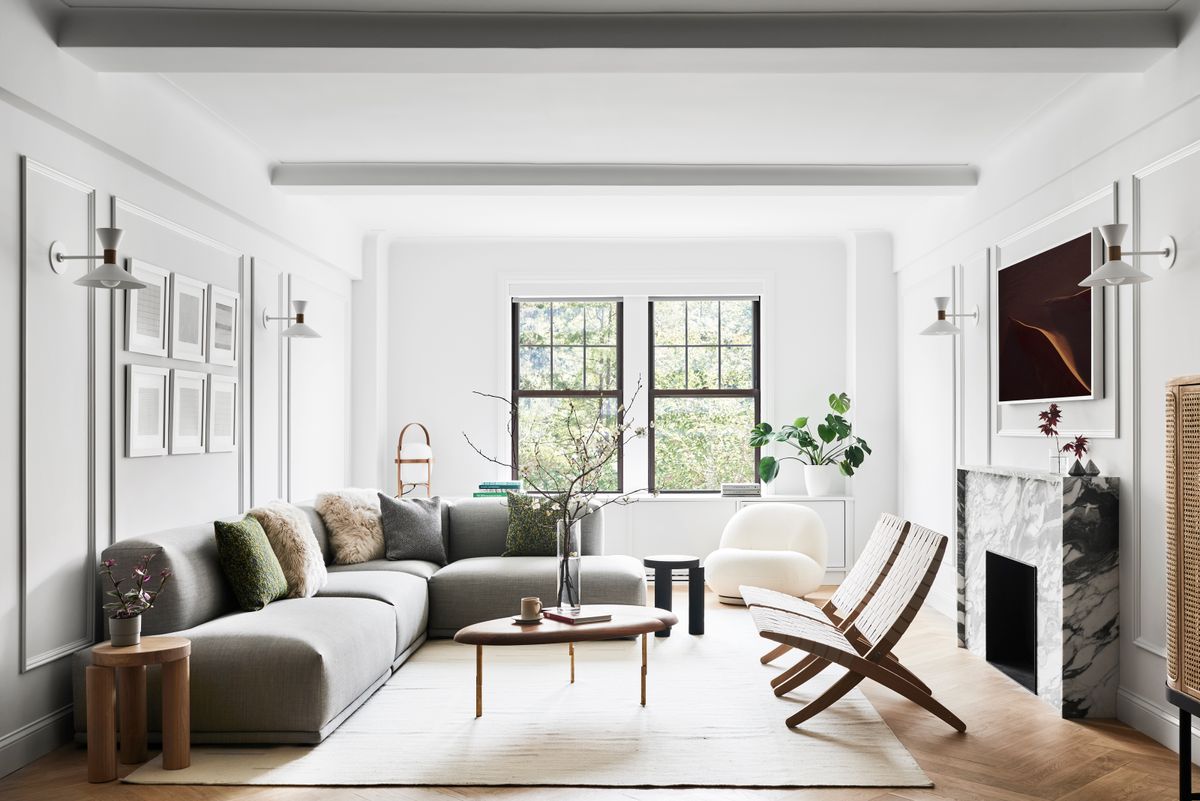
Enhance the visual appeal of your living space by incorporating accent colors that create depth and interest. By selecting the right hues and strategically placing them, you can transform the ambiance of your apartment and give it a stylish and inviting feel.
When choosing accent colors, consider shades that complement your existing color scheme and add a pop of vibrancy. These colors can be introduced through various elements such as furniture, artwork, textiles, or decorative accessories. By incorporating different textures and patterns, you can further enhance the visual impact and create a multi-dimensional effect.
1. Utilize Bold Shades: Dare to go beyond the conventional color palette and experiment with bold and vibrant accent colors to make a statement. Opt for shades that evoke a sense of energy and liveliness, such as rich jewel tones or vibrant primary colors.
2. Contrast and Harmony: Create balance and visual interest by combining accent colors that offer a striking contrast or a harmonious blend with your existing color scheme. Pairing complementary colors, like blue and orange or purple and yellow, can make a bold statement, while analogous colors, such as shades of blue and green, create a more soothing and cohesive look.
3. Focus on Key Areas: To maximize the impact of accent colors, focus on key areas or focal points in your apartment. Whether it’s a statement wall, a piece of furniture, or a unique decorative item, directing attention towards these elements will create visual depth and draw the eye.
4. Play with Patterns: Incorporating patterns in accent colors can add depth and dimension to your overall design. Consider using patterned wallpaper, printed fabrics, or decorative accessories to introduce visual interest. Mixing different patterns, such as stripes, florals, or geometric designs, can create a dynamic and visually appealing space.
5. Enhance with Lighting: Proper lighting can enhance the impact of accent colors. Experiment with different lighting techniques, such as spotlighting, wall sconces, or lampshades, to highlight specific areas and create a play of light and shadows. This will further emphasize the depth and dimension brought by your chosen accent colors.
Incorporating accent colors in your apartment decor can transform your space into a stylish and visually captivating home. Remember to consider the overall color scheme, experiment with bold hues, and strategically incorporate patterns and lighting to create depth and interest. By following these key principles, you can achieve a design that reflects your personal style and leaves a lasting impression on anyone who enters your home.
Embrace Functional Furniture
Discover the art of incorporating versatile and practical furniture pieces into your living space to enhance both style and functionality. By focusing on furniture that serves multiple purposes and adapts to your changing needs, you can create a home that is both aesthetically pleasing and highly practical.
|
1. Multi-Functional Coffee Tables Explore the world of coffee tables that offer more than just a surface for your morning cup of joe. Opt for designs that feature additional storage compartments or built-in shelves, providing you with extra space to display decorative items or store everyday essentials. |
|
2. Convertible Sofas Maximize your living room’s potential with a convertible sofa that effortlessly transforms into a comfortable bed. Perfect for accommodating overnight guests or creating a cozy nook for relaxation, these versatile pieces add both style and functionality to your apartment. |
|
3. Space-Saving Storage Solutions Utilize smart storage solutions that maximize every inch of your living space. Look for furniture pieces with hidden compartments, such as ottomans or bed frames with built-in drawers, to keep your belongings organized while maintaining a clutter-free environment. |
|
4. Folding Dining Tables Embrace the flexibility of folding dining tables, which allow you to create a dining area when needed and easily fold away for more open space. These practical yet stylish pieces are ideal for small apartments or multi-purpose rooms, where space optimization is key. |
By embracing functional furniture, you can strike a perfect balance between style and practicality in your home. Incorporate these ideas into your apartment decorating journey to create a space that not only looks great but also caters to your everyday needs.
Optimize Small Spaces

Maximizing the potential of compact living areas can be a challenge, but with a thoughtful approach, it is possible to create stylish and functional spaces. In this section, we will explore effective strategies and techniques to optimize small spaces without compromising on style or comfort.
1. Space Planning: A crucial aspect of optimizing small spaces is efficient space planning. This involves carefully considering the layout and arrangement of furniture and accessories to make the most of every inch. Utilizing multifunctional furniture, such as storage ottomans or convertible sofa beds, can help save valuable space while adding practicality and versatility to the room.
2. Vertical Storage: When floor space is limited, look upward for storage solutions. Installing shelves, floating or wall-mounted, can effectively utilize vertical space. Additionally, utilizing the space underneath furniture, such as beds or sofas, with storage bins or drawers, can help keep the area organized and clutter-free.
3. Light Color Palette: Light colors tend to create an illusion of more space in small areas. Opt for neutral or pastel shades for walls, furniture, and décor to visually expand the room. Reflective surfaces, like mirrors or glass tabletops, can also contribute to a brighter and more open ambiance.
4. Smart Organization: Emphasize efficient organization to keep small spaces tidy and functional. Utilize storage containers, baskets, or decorative boxes to keep belongings organized and easily accessible. Maximize the closet space by implementing space-saving hangers, dividers, and storage systems.
5. Clever Lighting: Ample lighting is vital to make small spaces feel open and inviting. Incorporate various lighting sources, such as ceiling lights, floor lamps, or task lighting, to create a well-lit and cozy ambiance. Consider using adjustable fixtures or dimmers to customize the lighting to suit different activities and moods.
6. Visual Tricks: Implementing visual tricks can create the illusion of more space. Hanging curtains closer to the ceiling and opting for floor-length panels can make the ceilings appear higher. Using large mirrors strategically can reflect light and give the impression of a larger space.
By implementing these optimization strategies, small spaces can be transformed into stylish and functional areas that maximize every square foot. Remember to balance aesthetics with practicality to create a space that truly feels like home.
Incorporate Multipurpose Pieces

Incorporating multipurpose pieces into your home decor can be a game-changer when it comes to maximizing space and functionality. These versatile and adaptable furnishings offer practical solutions without compromising on style. By selecting furniture and decor items that serve multiple purposes, you can create a stylish and efficient living space that meets all your needs.
Consider opting for multifunctional pieces, such as storage ottomans that can double as extra seating or coffee tables with concealed compartments for stashing away clutter. These types of items not only provide additional storage opportunities but also help maintain a clean and organized environment. Look for pieces that offer both form and function, combining aesthetic appeal with practical design elements.
Another way to incorporate multipurpose pieces is by choosing furniture that easily transforms to meet different requirements. For example, a sofa bed can serve as seating during the day and provide a comfortable sleeping solution for overnight guests. Similarly, a dining table with extendable leaves can be adjusted to accommodate a small gathering or expanded to accommodate larger parties. Versatile and adaptable furniture allows you to make the most out of your space while ensuring flexibility for various activities and occasions.
Don’t forget to also consider decorative items that can serve multiple purposes. A decorative room divider, for instance, not only adds visual interest and delineates spaces but can also be utilized as additional storage or a makeshift workspace. Look for pieces that offer dual functionality without compromising on style.
Incorporating multipurpose pieces into your apartment decor is a clever way to maximize space and enhance functionality. By carefully selecting versatile furniture and decor items, you can create a stylish and efficient home that meets all your needs. Embrace the concept of multifunctionality and transform your living space into a well-designed and practical oasis.
Consider Storage Solutions
One essential aspect of creating a stylish and well-organized living space is to carefully consider storage solutions. Finding innovative ways to maximize storage is crucial in keeping your apartment clutter-free and ensuring a clean and inviting atmosphere.
When it comes to storage, think beyond traditional options like cabinets and shelves. Diverse storage solutions can help you make the most of your apartment’s space while adding a touch of style to your decor. Consider incorporating multifunctional furniture pieces, such as ottomans with hidden compartments or bed frames with built-in drawers. These clever additions not only provide storage but also serve as attractive and practical elements in your home.
Another important aspect to consider is utilizing vertical spaces. Install floating shelves or mounted organizers on walls to make use of often-neglected areas. Vertical storage solutions not only create visual interest but also help keep your belongings organized and easily accessible. By using hooks, baskets, and hanging organizers, you can effectively utilize vertical space in your apartment, accommodating various items without occupying valuable floor space.
Furthermore, don’t overlook the potential of underutilized areas, such as the back of doors or inside closets. Installing hooks or over-the-door storage units can provide additional space for hanging coats, bags, or accessories. Utilize stackable storage containers or bins to maximize the available space inside closets, allowing you to neatly organize clothing, shoes, or other belongings.
In summary, considering storage solutions is an integral part of apartment design. By thinking outside the box and exploring diverse options, you can create a stylish and well-organized home that maximizes space and minimizes clutter. Incorporating multifunctional furniture, utilizing vertical spaces, and making use of underutilized areas will help you achieve a stylish and functional living space.
Utilize Creative Lighting
Enhance the ambiance of your living space with imaginative lighting solutions that will elevate the overall aesthetic of your home. By leveraging various lighting techniques and fixtures, you can create a captivating and visually dynamic environment that reflects your unique personal style.
Experiment with different types of lighting, such as recessed lights, pendant lights, and wall sconces, to establish different moods and highlight specific features or areas in your apartment. Dimmable lights allow you to easily adjust the intensity of the lighting, providing versatility for various activities and occasions.
Consider incorporating accent lighting to draw attention to artwork, architectural details, or focal points in your home. This can be achieved through the use of track lighting, picture lights, or strategically placed table lamps. By effectively lighting these elements, you can create a sense of depth and showcase your prized possessions.
Another creative lighting solution is to introduce decorative lighting fixtures, such as chandeliers or unique floor lamps, that can serve as statement pieces in your apartment. These eye-catching fixtures not only provide illumination but also add a touch of elegance and sophistication to your overall decor.
Take advantage of natural lighting by using sheer curtains or blinds to allow ample sunlight to filter into your home. This not only helps create a bright and airy atmosphere but also reduces the need for artificial lighting during the day. Additionally, strategically placing mirrors opposite windows can help reflect and amplify natural light, making your apartment feel more spacious and inviting.
Remember that lighting plays a crucial role in establishing the mood and ambiance of your living space. By utilizing creative lighting techniques and fixtures, you can transform your apartment into a stylish and inviting home that reflects your personality and enhances your overall well-being.
Maximize Natural Light
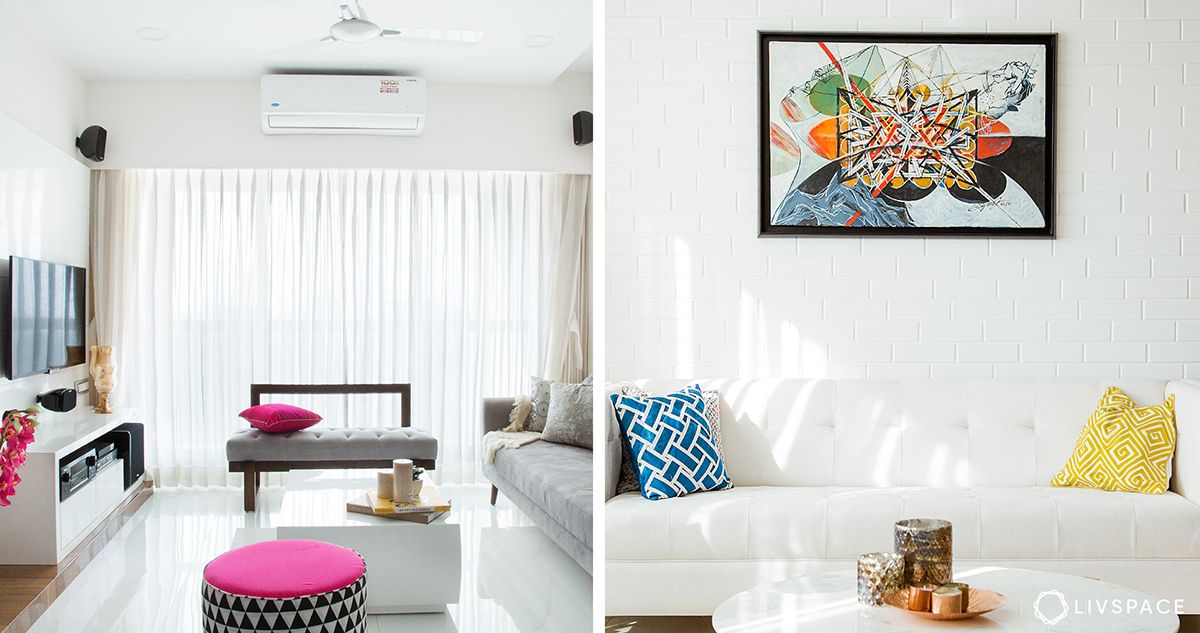
When it comes to creating a stylish and inviting home, one key factor to consider is maximizing the amount of natural light within your space. Natural light has the ability to completely transform the atmosphere of a room, making it feel brighter, more spacious, and more welcoming.
Instead of relying solely on artificial lighting, incorporating techniques to maximize natural light can greatly enhance the overall aesthetic of your home. By strategically placing mirrors, opting for light-colored window treatments, and using sheer curtains or blinds, you can allow natural light to flood into your space, creating a warm and inviting ambiance.
In addition to these visual enhancements, maximizing natural light also has numerous benefits for your well-being. Exposure to natural light has been proven to boost mood, increase productivity, and improve overall mental health. By embracing natural light, you not only enhance the beauty of your home but also create a healthier and more uplifting environment.
- Place large mirrors opposite windows to reflect and amplify the natural light.
- Choose light-colored or sheer window treatments to allow light to pass through easily.
- Use light-colored paint or wallpaper to brighten up the room and reflect light.
- Trim any trees or shrubs outside your windows that may be blocking natural light.
- Keep windows clean and free from obstructions to maximize the amount of light that enters.
- Consider installing skylights or light tubes in rooms with limited access to natural light.
By implementing these simple yet effective techniques, you can make the most of the natural light available and create a stylish and luminous home that will leave you feeling inspired and refreshed.
To create a warm and inviting atmosphere in your living space, it is essential to add ambient lighting. By incorporating various lighting elements, you can create a cozy and relaxing ambiance that enhances the overall aesthetic of your home. Whether you prefer soft, gentle lighting or a more dramatic and bold effect, ambient lighting plays a crucial role in setting the desired mood in any room.
- Consider Different Light Sources: Incorporate a combination of overhead lighting, floor lamps, table lamps, and wall sconces to achieve a balanced and layered effect. Each light source can contribute to the overall ambiance of the room and create a harmonious atmosphere.
- Choose the Right Bulbs: Opt for bulbs that emit warm and soft light, such as incandescent or LED bulbs with a lower color temperature. These bulbs create a cozy and inviting glow, perfect for relaxation and comfort.
- Dimmers for Versatility: Installing dimmer switches allows you to adjust the brightness levels according to your needs and mood. Dimmers provide flexibility and control over the intensity of the ambient lighting, allowing you to create the desired ambiance for any occasion.
- Utilize Reflective Surfaces: Incorporate mirrors, metallic accents, and glossy finishes in your decor to reflect and amplify the ambient lighting. These surfaces can bounce light around the room, making it appear brighter and more spacious.
- Consider Natural Light: Take advantage of natural light by arranging your furniture and window coverings to optimize the amount of sunlight that enters your space. Natural light can beautifully complement your ambient lighting and create a harmonious blend of illumination.
- Layer Your Lighting: Combine different types of lighting, such as ambient, task, and accent lighting, to create depth and dimension in your space. Layering your lighting not only adds visual interest but also allows for flexibility and functionality.
- Experiment with Light Placement: Play around with the placement of your light sources to highlight certain areas, create focal points, and add visual interest. Strategic placement of lighting fixtures can enhance architectural features and draw attention to specific elements in your room.
- Blend Functionality with Style: When selecting lighting fixtures, choose ones that not only provide the necessary illumination but also complement your overall decor style. Lighting fixtures can serve as decorative elements and add a touch of personality to your space.
By adding ambient lighting to your apartment, you can transform it into a stylish sanctuary that exudes warmth and elegance. Carefully consider the different lighting options and techniques to create a visually pleasing and inviting atmosphere that reflects your unique style and personality.
Questions and answers
What are the key principles for a stylish home?
The key principles for a stylish home include balance, proportion, harmony, focal point, and personalization. By achieving a balance in furniture and accessories placement, using proportions that fit the space, creating a harmonious color palette, highlighting a focal point, and adding personal touches, you can create a stylish and inviting home.
How can I achieve balance in my apartment decor?
To achieve balance, you can distribute the visual weight of furniture, accessories, and colors evenly throughout the space. Creating symmetrical arrangements, using similar elements on both sides of a room, or placing a large piece of furniture opposite multiple small items are some methods to achieve balance in apartment decor.
Why is it important to consider proportions in apartment decorating?
Considering proportions is important in apartment decorating to ensure that furniture and accessories are in scale with the space. Oversized furniture in a small apartment can make it feel cramped, while tiny pieces in a large space can make it appear empty. Maintaining proper proportions will create a visually pleasing and well-designed home.
How can I create a unified color palette for my apartment?
To create a unified color palette for your apartment, start by choosing a primary color for the walls. Then select complementary or harmonious colors for furniture, textiles, and accessories. Use color swatches, mood boards, or online tools to experiment, and make sure the colors flow seamlessly from one room to another, creating a cohesive look.
What are some ways to add personal touches to my apartment decor?
Adding personal touches to your apartment decor can be achieved by displaying family photos, showcasing meaningful artwork or souvenirs, incorporating hobbies or interests into the design, or using unique furniture and accessories that reflect your personality. Layering textures and patterns that resonate with you is another way to infuse your personal style into the space.
What are the key principles of apartment decorating?
The key principles of apartment decorating include creating a cohesive color scheme, maximizing space with smart furniture placement, utilizing vertical space for storage, incorporating personal touches and statement pieces, and staying organized.
How can I create a cohesive color scheme in my apartment?
To create a cohesive color scheme, you can start by choosing a main color and then selecting complimentary or contrasting colors for accent pieces. Use color swatches or mood boards to visualize how the colors will work together before committing to any paint or furniture decisions.
What are some tips for maximizing space in a small apartment?
Maximizing space in a small apartment can be achieved by investing in multifunctional furniture such as sofa beds or storage ottomans, using wall-mounted shelves or hanging organizers, utilizing under bed storage, and keeping surfaces clutter-free.
How can I personalize my apartment without breaking the bank?
You can personalize your apartment without breaking the bank by incorporating personal photographs or artwork, adding decorative pillows or throws in your favorite colors or patterns, using removable wallpaper or wall decals, and displaying sentimental items or collections in a stylish way.
What are some effective ways to stay organized in an apartment?
Some effective ways to stay organized in an apartment include investing in storage solutions such as baskets or bins, labeling items or shelves, using drawer dividers or trays to keep smaller items in order, implementing a daily cleaning routine, and decluttering regularly to avoid accumulation of unnecessary items.



